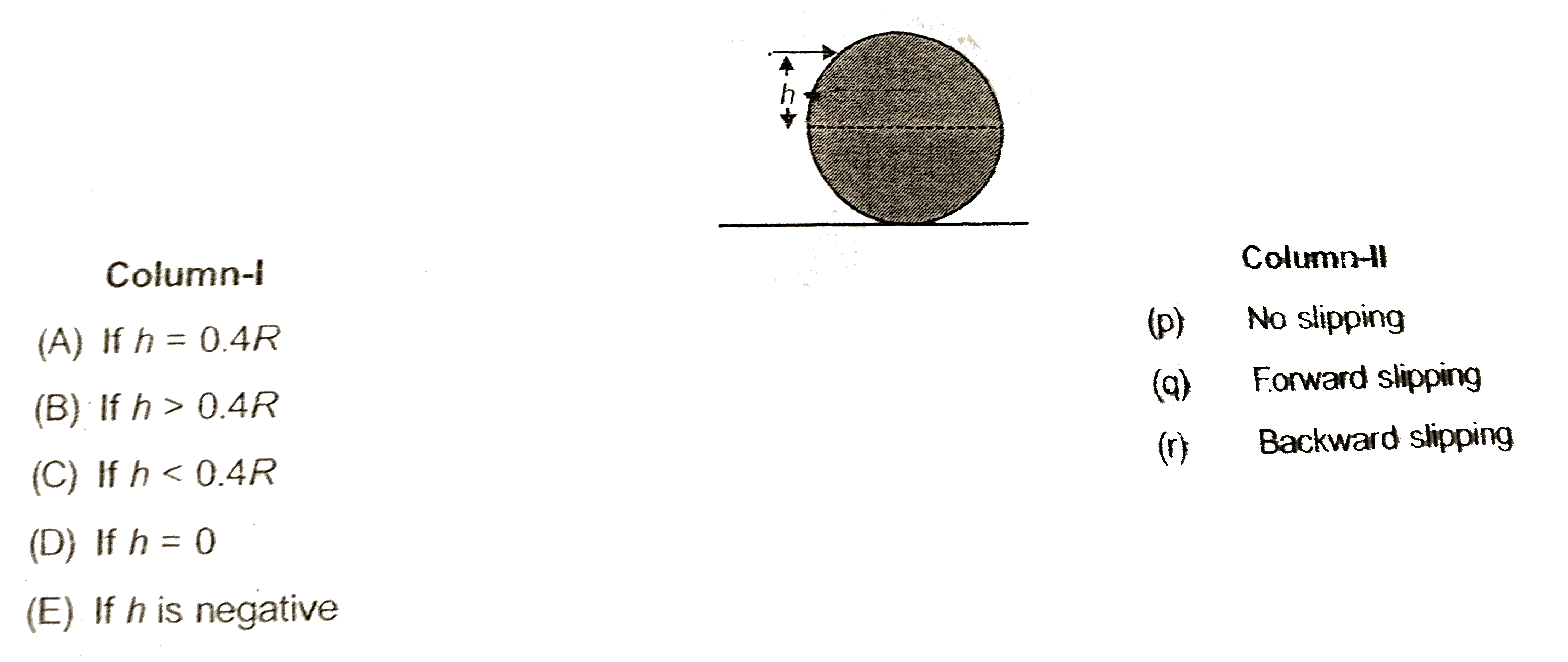Figure shows a watch glass embedded in clay. A tiny spherical ball is placed at the edge B at a height h above the centre A

The ball comes to rest because of
frictional force
gravitational force
both a and b
none of these
The correct Answer is:C
The forces which oppose the motion of ball are frictional and gravitational
Topper's Solved these Questions
- WORK AND ENERGYBOOK - MTG IIT JEE FOUNDATIONCHAPTER - WORK AND ENERGYEXERCISE - Exercise (Subjective Problems Very short Answer Type)
16 Videos
- WORK AND ENERGYBOOK - MTG IIT JEE FOUNDATIONCHAPTER - WORK AND ENERGYEXERCISE - Exercise (Subjective Problems short Answer Type)
16 Videos
- WORK AND ENERGYBOOK - MTG IIT JEE FOUNDATIONCHAPTER - WORK AND ENERGYEXERCISE - Exercise (Multiple Choice Questions Level -2)
14 Videos
- THRUST AND PRESSUREBOOK - MTG IIT JEE FOUNDATIONCHAPTER - THRUST AND PRESSUREEXERCISE - Olympiad/HOTS Corner
15 Videos
Similar Questions
Knowledge Check
Consider 3 identical balls, each having mass of 0.1 kg. The ball A has an initial velocity of 10√3m/s. It then collides simultaneously with balls B and C, whose centres are on a line perpendicular to the initial velocity of the ball A. They are initially in contact with each other and are at rest. The ball A is aimed directly at the contact point of B and C. After the collision, if the ball A comes to rest, then
ACollision in elastic.BCollision is inelastic and final kinetic energy of the system-Initial kinetic energy of the system = 5JCCollision is inelastic and final kinetic energy of the system - Initial kinetic energy of the system = - 5JDCollision in elastic, but the final kinetic energy of the system is less than the initial kinetic energy of the system.A solid shperical ball of mass m and radius R is present on a rough horizontal surface. A person hit the ball at distance h above the centre of the ball as shown in the figure. Find out the h such that the ball starts pure rolling just after impact.
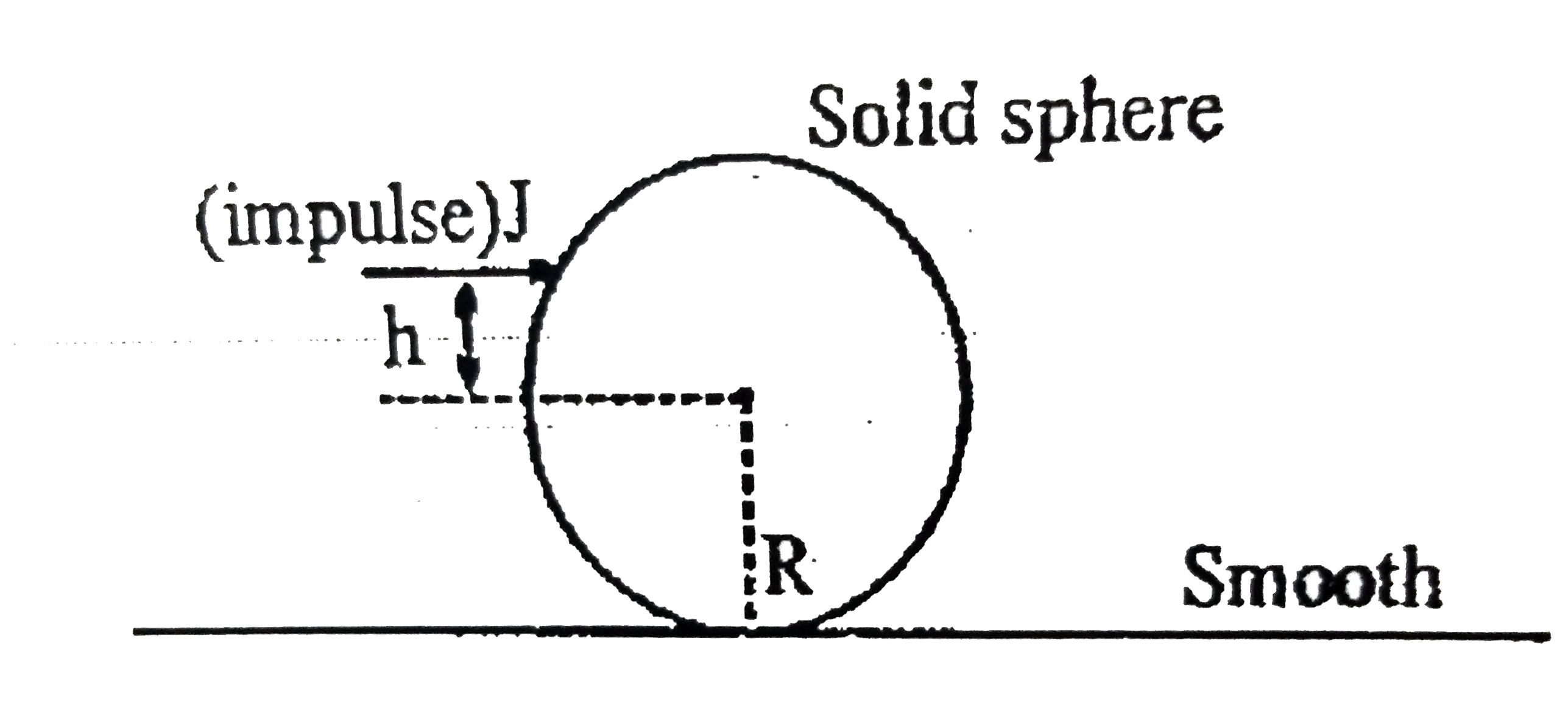 Ah=R5Bh=3R5Ch=RDh=2R5
Ah=R5Bh=3R5Ch=RDh=2R5A tennis ball with (small) mass m2 rests on the top of a basketball of mass m1which is at a height h above the ground, and the bottom of the tennis ball is at height h+d above the ground. The balls are dropped. To what height does the tennis ball bounce with respect to ground? (Assume all collisions to be elastic and m1>>m2)
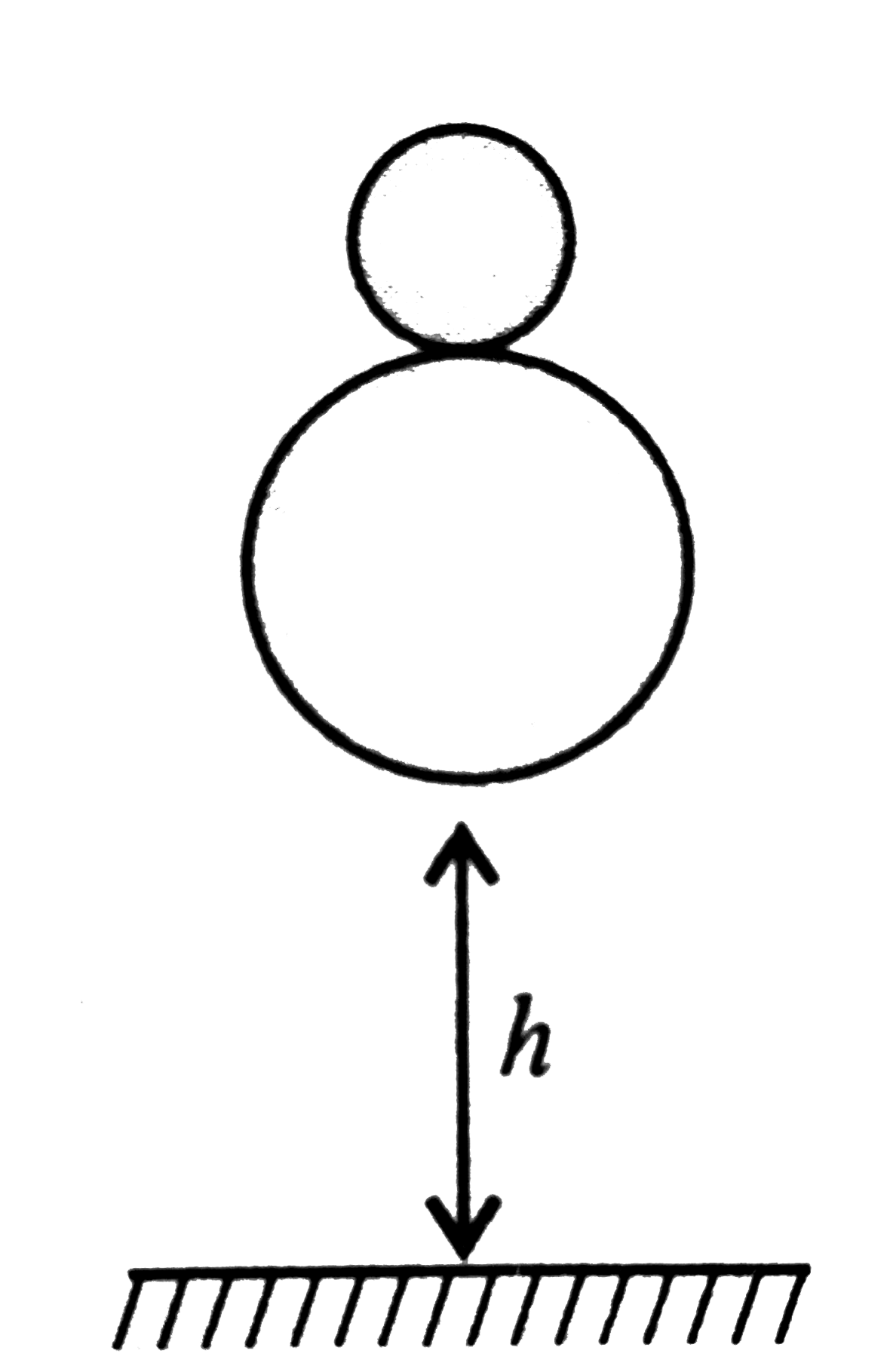 AhB2hC3hD9h
AhB2hC3hD9h
Consider 3 identical balls, each having mass of 0.1 kg. The ball A has an initial velocity of 10√3m/s. It then collides simultaneously with balls B and C, whose centres are on a line perpendicular to the initial velocity of the ball A. They are initially in contact with each other and are at rest. The ball A is aimed directly at the contact point of B and C. After the collision, if the ball A comes to rest, then
View SolutionIn the Figure FE is a man of height H standing on a floor. E is eye of the man and F is his foot. The distance between eye and the head is negligible. A steel ball of radius r is suspended in front of him. The distance of the ball from the man is H and height of the centre of the ball from the floor is H2. It is given that r<<H. The surface of the ball acts like a mirror and the man sees his image in it. Calculate the angle subtended by the image at the eye of the man.
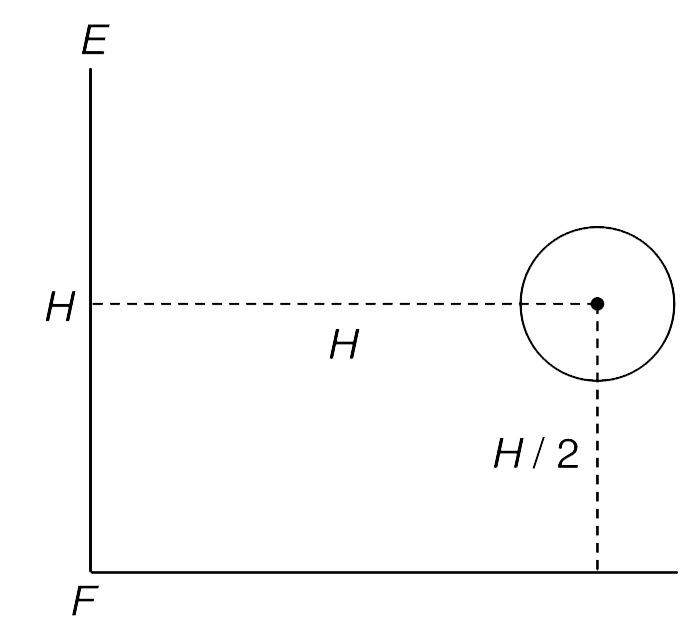
View SolutionTwo elastic balls of masses M and m (M>>m) are placed on top of each other with a small gap between them. The balls are dropped on to the ground with the bottom of the lower ball at height h above the ground. The lower ball has a radius R and the upper ball has negligible dimension.
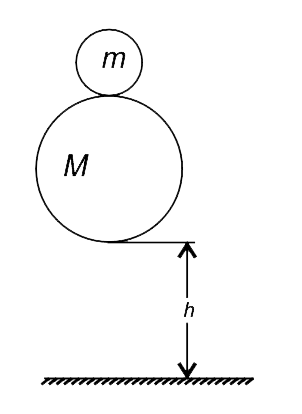
(a) Up to what height the ball of mass m will bounce above the ground ?
(b) Does the result obtained above violates the low of conservation of mechanical energy?
View Solution
A billiard ball, initially at rest, is given a sharp impulse by a cue. The cue is held horizontally a distance h above the centre line as shown in figure. The ball leaves the cue with a speed v0 and because of its forward english (backward slipping) eventually acquires a final
speed 97v0 show that h=45R
Where R is the radius of the ball.
View Solution
A billiard ball, initially at rest, is given a sharp impulse by a cue. The cue is held horizontally a distance h above the centre line as shown in figure. The ball leaves the cue with a speed v0 and because of its forward english (backward slipping) eventually acquires a final
speed 97v0 show that h=45R
Where R is the radius of the ball.
View Solution

